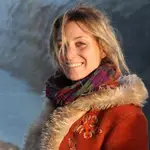Robert John Bardo was obsessed with Rebecca Schaeffer. He wrote her fan mail, drew portraits of her, and stalked her at the studio until one day, he found her home address.
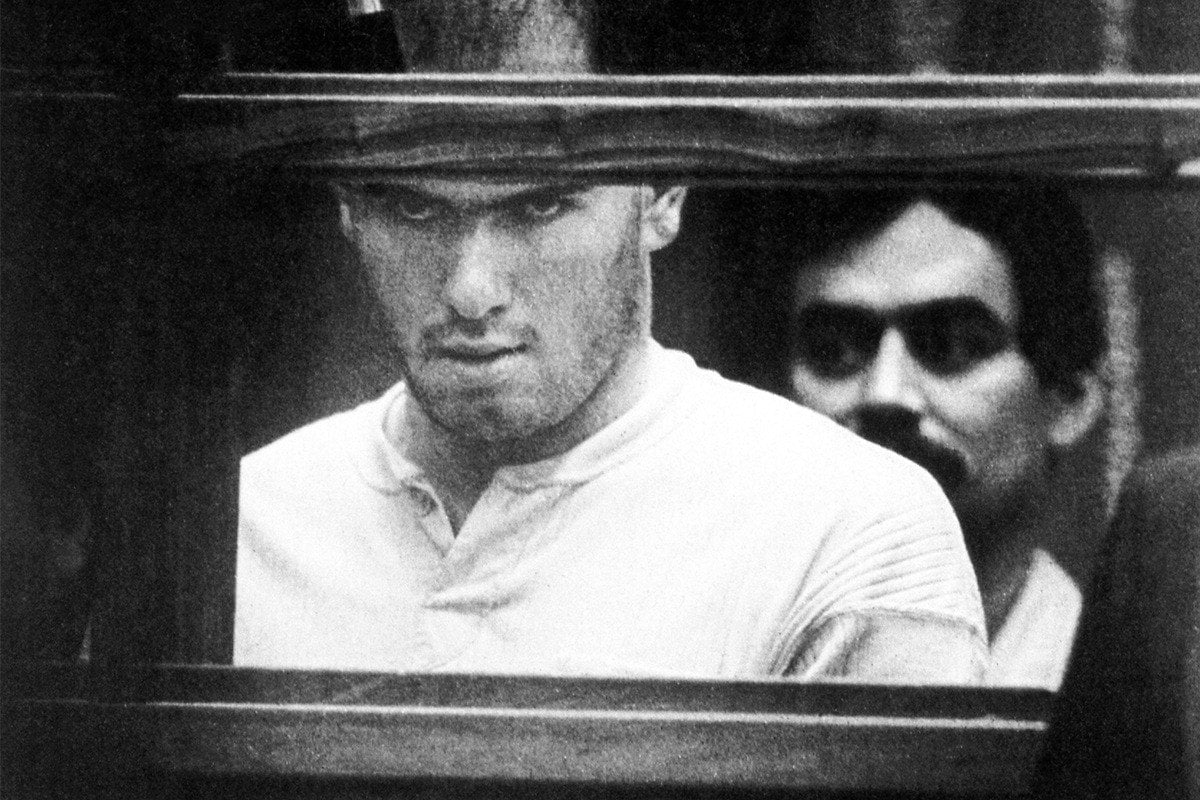
Getty ImagesOn July 18, 1989, Robert John Bardo murdered 21-year-old actress Rebecca Schaeffer and is currently serving a life sentence with no chance of parole.
Robert John Bardo’s life revolved around famous women. Throughout his difficult childhood and teenage years, writing to female celebrities was the only thing that brought him fulfillment. However, no one saw these interests as dangerous until it was too late.
In July 1989, Robert John Bardo finally went too far when he shot and killed 21-year-old actress Rebecca Schaeffer outside her Hollywood home. But the seeds of this tragic murder were planted long before.
This is the chilling story of Robert John Bardo.
Robert John Bardo Murders Rebecca Schaeffer
Robert John Bardo’s bus arrived early in Los Angeles on July 18, 1989. Disheveled and unshaven, he walked the streets of West Hollywood before he located the street that was home to rising starlet Rebecca Schaeffer.
With a signed photo of Schaeffer in hand, he approached passersby and asked them if they knew 21-year-old Schaeffer’s exact address.
“What?” Irene Tishkoff replied when Bardo showed her the photo. Tishkoff hurried away, convinced the young man was crazy.
Bardo eventually found Schaeffer’s home at 120 N. Sweetzer Avenue. When Schaeffer answered the door, Bardo explained who he was and showed her a letter he had received from her in response to one of the many pieces of fan mail he’d written.
Schaeffer smiled at Bardo, then excused herself, telling him she needed to get ready for an appointment. Before Bardo left, Schaeffer shook his hand, telling him to take care.
Robert John Bardo, elated from the interaction, made his way to a diner to eat breakfast. He then remembered the compact disc he had brought for Schaeffer and decided he would return to her apartment.
However, when Schaeffer opened the door the second time, she was not as warm as she had been the first time. Instead, she seemed irritated by his presence.
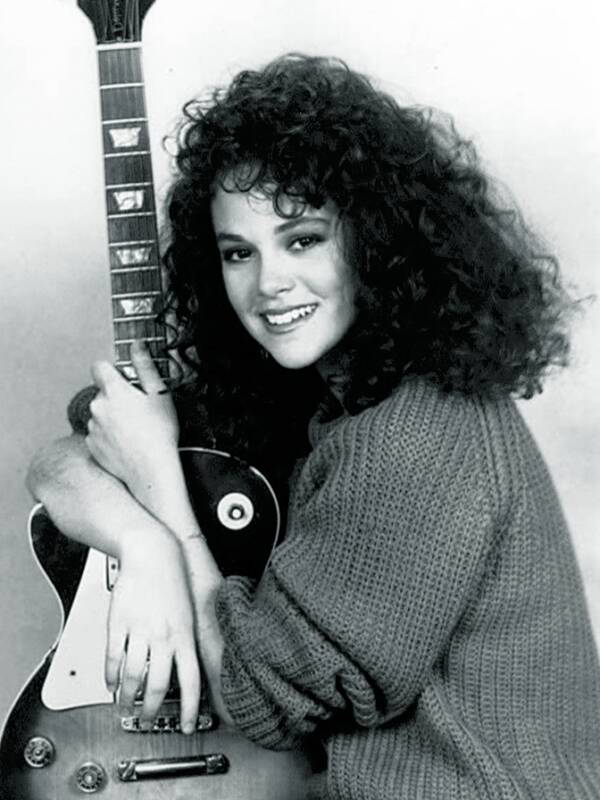
Wikimedia CommonsRobert John Bardo stalked Rebecca Schaeffer for three years before he went to her home and murdered her in cold blood.
“You came to my door again. Hurry up, I don’t have much time,” Schaeffer reportedly said to Bardo.
“I forgot to give you something,” Robert John Bardo said as he produced a gun from his bag. Without hesitation, he aimed it at her chest and fired.
Schaeffer screamed, “Why, why?” as she fell in her doorway.
On hearing the commotion, Schaeffer’s neighbor Richard Goldman rushed out of his house. He described seeing a woman’s legs splayed out on Schaeffer’s doorstep and “a man with a yellow shirt and short kinky hair, trotting up the block.”
Schaeffer was rushed to a hospital but died shortly after her arrival.
All the world was asking: Who was this disturbed young man who killed her? Who was Robert John Bardo?
Robert John Bardo’s Troubled Childhood
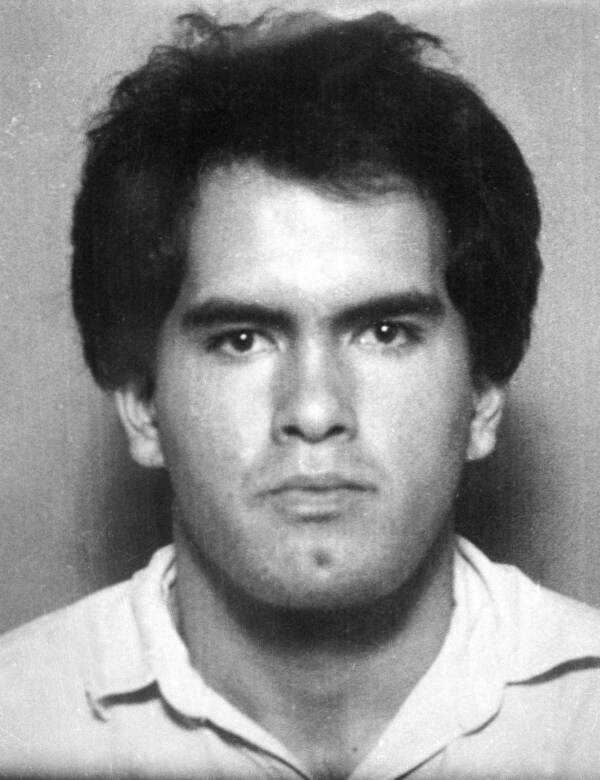
Public DomainRobert John Bardo’s mugshot from when he was arrested in Tucson.
Robert John Bardo was born Jan. 2, 1970, the youngest of June and Philip Bardo’s seven children.
Philip was a non-commissioned Air Force officer who married June while he was based in Japan. When Bardo was 13, the family settled in Tucson permanently after years of moving.
Bardo’s home life was turbulent. He suffered systematic abuse and neglect at the hands of his mentally ill mother, alcoholic father, and cruel older brother.
Bardo earned good grades in junior high, but made several cries for help in the form of letters to one of his teachers.
The letters, of which the themes were his own suicide and the murders of others, concerned his teacher greatly. The school strongly recommended to Bardo’s parents that they seek psychiatric help for their son, but apart from a few counseling sessions, no real action was ever taken.
Having received no psychiatric treatment, Bardo’s mental health continued to deteriorate.
In high school, although he still managed to achieve top marks, one teacher remarked how Robert John Bardo was “a time bomb waiting to explode.”
Bardo’s Breaking Point
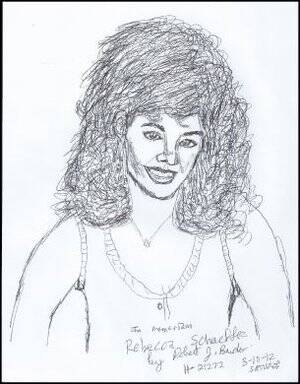
Robert John BardoA portrait of Rebecca Schaeffer drawn by Robert John Bardo.
Robert John Bardo was placed in a foster home for a short time, and then in the summer of 1985, was admitted to a psychiatric hospital.
He underwent a number of psychiatric evaluations, the results of which led to the conclusion he was “severely emotionally handicapped” and his family was “pathological and dysfunctional.” Bardo was also diagnosed with bipolar disorder.
Even though he appeared to be making progress, Bardo’s parents removed him from the facility after just a month.
Bardo then dropped out of high school. Although he was very bright, without even a high school diploma, he had to settle for work as a janitor at a Jack in the Box.
His behavior became increasingly erratic at this time. Spending his days working a menial job, with virtually no social interaction, was severely detrimental to Robert John Bardo’s mental health.
In the evenings, he would walk through his neighborhood and downtown Tucson, making obscene gestures at people, running through strangers’ yards and being generally disruptive. In the 18 months leading up to Schaeffer’s murder, he was arrested three times for offenses including domestic violence and antisocial behavior but pleaded no contest in each instance.
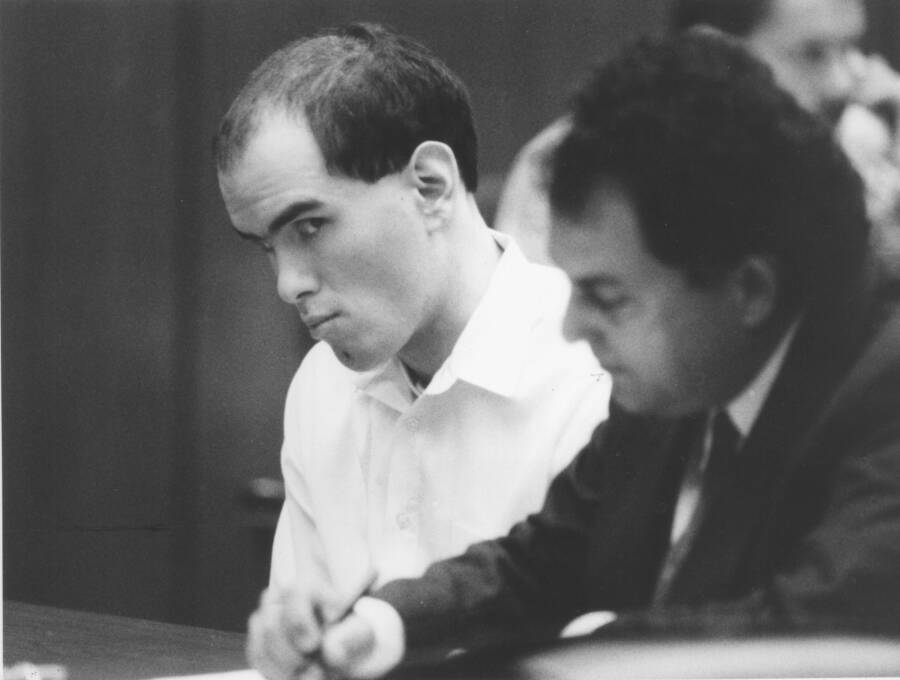
Steve Dykes/Los Angeles Times via Getty ImagesRobert John Bardo stalked actress Rebecca Schaeffer for three years before brutally murdering her outside her Hollywood home on July 18, 1989.
Several days before he traveled to Los Angeles, Robert John Bardo threatened his neighbors who were throwing a party across the street. “If you don’t shut up, I’m going to get my .357 magnum and shoot you!” He yelled.
Naturally, Bardo’s presence made people feel extremely uncomfortable. A local business owner said of him: “He looked out of place…sometimes you’re driving down a road and you pass somebody who doesn’t look right.”
One of Bardo’s neighbors, Sydney Dugon, described Bardo as “A real ‘Psycho’ guy.”
But none of these observations would prove to be of any use in saving Rebecca Schaeffer’s life.
Bardo Begins Stalking Rebecca Schaeffer
Soon after moving to Tucson, a young Robert John Bardo stole enough money from his mother to buy a bus ticket to Maine. The aim of his trip was to track down young peace activist Samantha Smith, but he was picked up by authorities and sent home before he could do so.
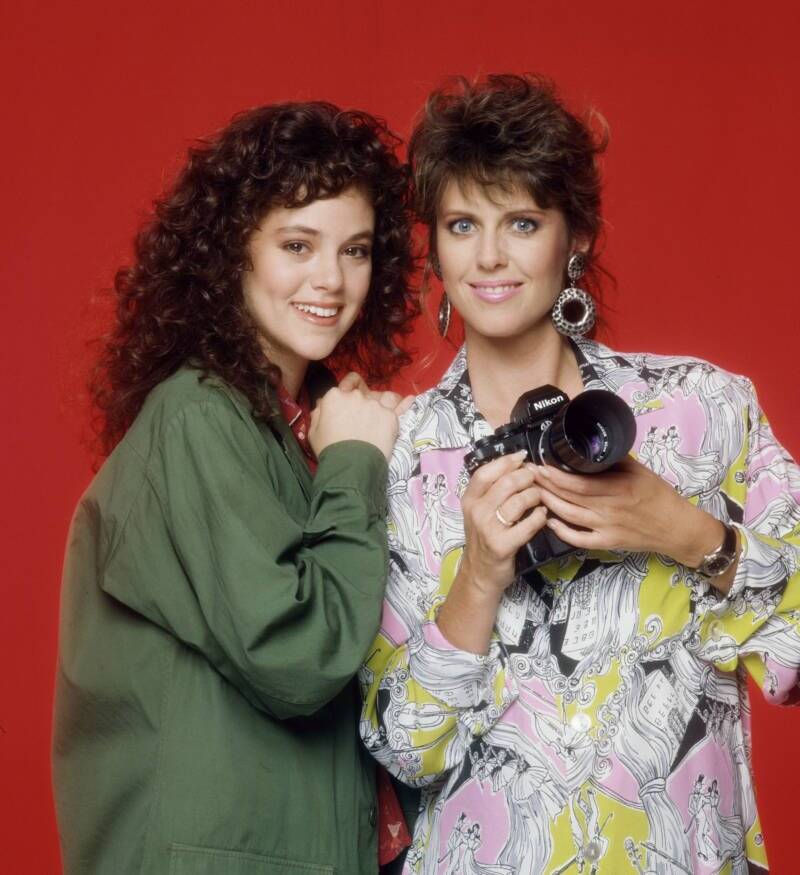
CBS Photo Archive/Getty ImagesRebecca Schaeffer (left) with her on-screen sister, Samantha (Pam Dawber) in My Sister Sam, 1987.
Smith tragically died in a plane crash in 1985.
Popstar Debbie Gibson was next among Bardo’s obsessions. In 1988, Bardo caught a bus to New York City with the intention of finding Gibson, but he was unsuccessful.
He did, however, visit the spot where Mark David Chapman shot and killed John Lennon in 1980. After Chapman killed Lennon, he sat down and read The Catcher In The Rye.
Little did anyone know that an eerily similar scene would take place the following year involving Bardo and a copy of the same book on Rebecca Schaeffer’s porch.
But then, in October 1986, 16-year-old Robert John Bardo watched the new sitcom, My Sister Sam, for the first time.
The show starred Rebecca Schaeffer as Patti Russell, a spunky 16-year-old who goes to live in San Francisco with her older sister, successful photographer Samantha Russell, played by Pam Dawber.
Bardo would later say of Schaeffer:
“She came into my life in the right moment. She was brilliant, pretty, outrageous; her innocence impressed me. She turned into a goddess for me, an idol. Since then, I turned into an atheist, I only adored her.”
Bardo began writing a stream of letters to Schaeffer. The more he wrote, the more he felt that a bond was forming between them. Then, in the summer of 1987, Schaeffer actually replied.
In her note, she wrote: “Yours was one of the nicest I ever got.”
Bardo took this to mean that Schaeffer shared his feelings. As soon as he could, he caught a plane to Burbank, home of Warner Brothers Studios.
Standing at the studio gates with a five-foot-tall teddy bear and a bouquet of flowers, Bardo begged the guards to be let in so he could see Schaeffer. They refused him entry.
Bardo flew back to Tucson, but a month later, he returned to the studio with a knife. Once again, he was denied entry. An entry from Robert John Bardo’s diary, just days after the incident read: “I don’t lose. Period.”
Bardo’s Adoration For Schaeffer Takes A Dark Turn
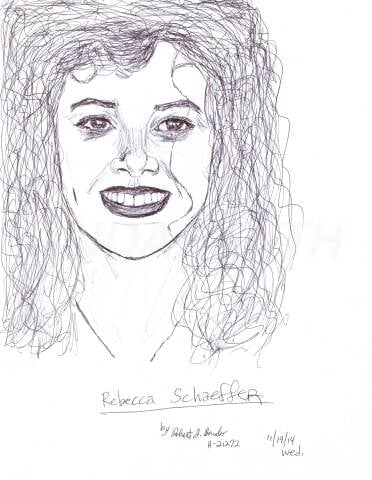
Robert John BardoAnother portrait of Rebecca Schaeffer drawn by Robert John Bardo.
In April 1988, My Sister Sam came to an end which also spelled the end to Schaeffer’s innocent character, Patti Russell.
Robert John Bardo only knew Schaeffer as the playful and charming Patti; with regards to the rest of her life, he was clueless. It never occurred to him that Schaeffer would earn parts in other movies and TV shows as characters with very different personalities.
Schaeffer starred in the dark comedy Scenes From The Class Struggle in Beverly Hills, which came out in early June 1989. Bardo was sent into a rage during a scene in which Schaeffer was in bed with a male co-star. He could not comprehend what had happened to the innocent and bubbly girl he had watched repeatedly on My Sister Sam.
Bardo recalled a magazine article he had read about Arthur Richard Jackson, who stalked actress Theresa Saldana, from the movie Raging Bull.
In 1982, Jackson hired a private investigator to find Saldana’s address. This made it easy for Jackson to track her down, and when he did, he stabbed Saldana so viciously it was a miracle that she survived. Jackson was charged with attempted murder and served 14 years in prison for his assault on the actress.
Inspired by Jackson’s method of tracking down his victim, Bardo hired a private investigator to find Schaeffer. For $300, the agency was able to obtain Shaeffer’s address from the DMV and pass it onto Bardo.
When trying to buy a gun, Bardo was turned down by the owner of the gun shop on account of his history of mental illness. Bardo was not discouraged, however, and asked his brother to buy him one instead. His brother complied, though he allegedly made Bardo promise that he would only use the gun when the two of them were together for target practice.
Robert John Bardo also wrote an ominous letter to his sister in Tennessee, which read: “I have an obsession with the unattainable and I have to eliminate (what) I cannot attain.”
“I Killed Rebecca Schaeffer”
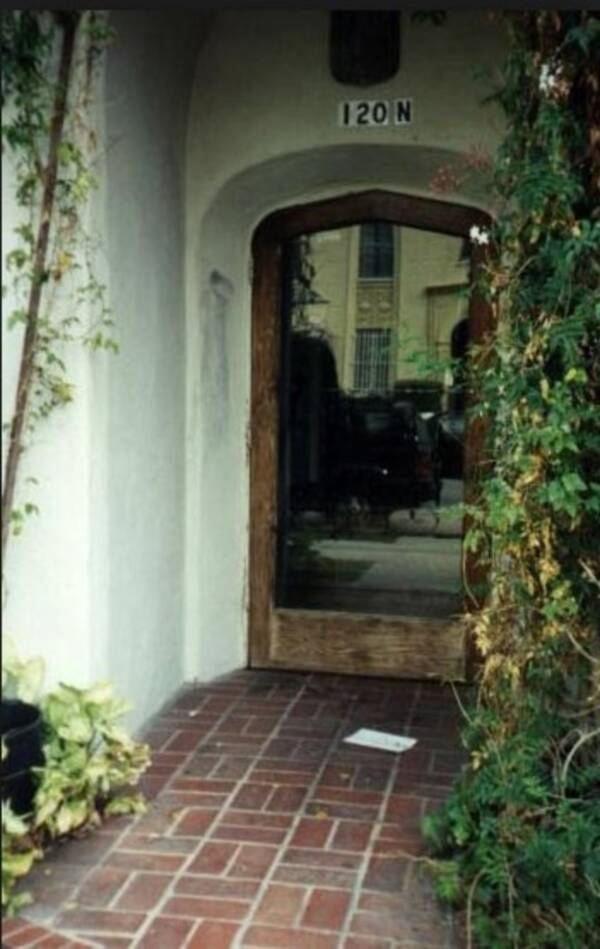
MurderpediaRebecca Schaeffer’s doorway at 120 N. Sweetzer, where she was killed by Robert John Bardo.
The day after Robert John Bardo shot Rebecca Schaeffer at point-blank range in her doorway, authorities in Tucson, Arizona, received reports from motorists about a man dodging in between cars on a busy highway, shouting that he had “killed Rebecca Schaeffer.”
Regarding this incident, Bardo would later say: “I thought I owed it to Rebecca to kill myself after what had happened.”
Bardo was apprehended in Tucson and held on a bail of one million dollars. He would later be extradited to California after witnesses from Schaeffer’s neighborhood were shown his photo and confirmed that they’d seen him the morning of Schaeffer’s murder.
Bardo’s sister claimed that he had called her the morning of the murder and told her that he was just blocks away from Schaeffer’s home.
LAPD also discovered items belonging to Bardo, including a copy of The Catcher In The Rye, a yellow shirt, and a gun holster lying on the ground not far from Schaeffer’s Sweetzer Avenue apartment.
Robert John Bardo’s trial consequently began in late September 1991. No jury was present. Bardo’s defense lawyer, Stephen Galindo, hoped to convince Judge Dino Fulgoni that Bardo’s mental illness rendered him unable to plan the killing of Schaeffer. Therefore, Bardo was only guilty of second-degree murder.
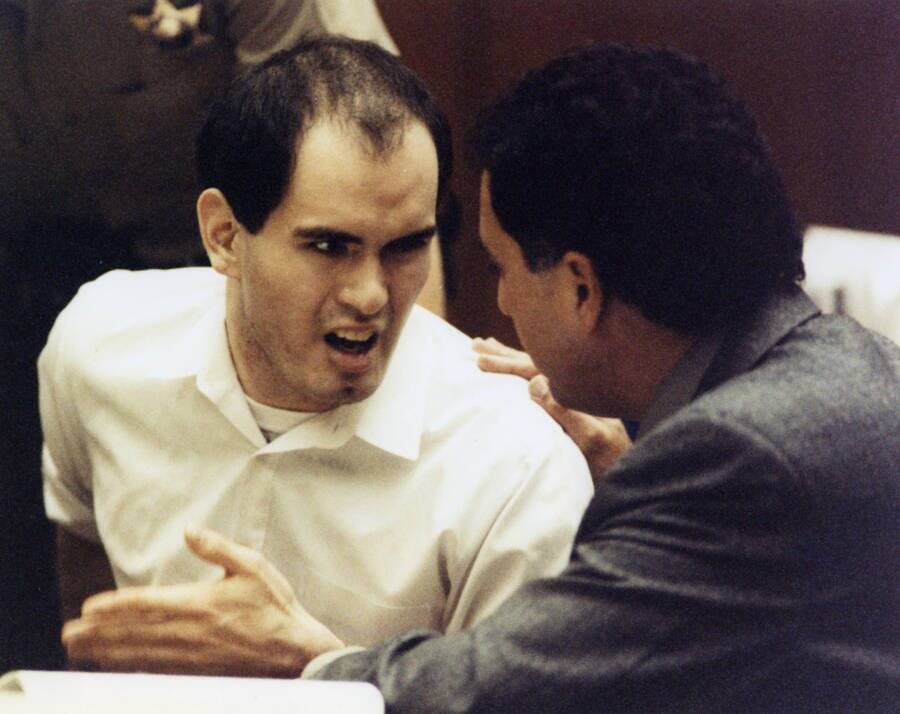
Anacleto Rapping/Los Angeles Times via Getty ImagesRobert John Bardo’s lawyer hoped to convince the judge that his client’s mental illness prevented him from premeditating the murder of Rebecca Schaeffer.
The star witness for the defense was Dr. Park Dietz, a psychiatrist who specialized in people who assassinated celebrities and other public figures. Dietz interviewed Bardo while he was in jail awaiting trial.
A tape of the interview was played as part of Bardo’s defense. Bardo explained to Dietz that he was obsessed with Schaeffer and “couldn’t let her go.”
During the interview, Robert John Bardo detailed his attack on Schaeffer as it happened, as well as described his own thought process during.
“I thought that was a very callous thing to say to a fan,” Bardo told the doctor of Schaeffer’s response when he returned to her home.
Bardo reenacted the scene where he pulled the gun from his bag and shot her in the chest. Then, he described what happened afterward: “She was just screaming. She was going: ‘Why, why?'”
He even considered shooting himself right there: “I was still fumbling around, thinking I should blow my head off and fall on her.”
Bardo explained to Dietz during that interview how the U2 song, “Exit,” was an inspiration to him.
When the defense played the song in the courtroom, it completely transformed Robert John Bardo who had otherwise sat motionless throughout the trial. On hearing the song, he began to bang his knee as if it were a drum and bobbed his head to the rhythm of the music.
Bardo did also eventually express remorse over what he had done.
“I really feel kind of guilty about all that’s happened. My feelings for her were uncontrollable. I was a fan of hers and I may have carried it too far.”
He went on to say: “But I loved her… If it wasn’t for my obsession, I’d be law-abiding. But Hollywood is a very seductive place. There are a lot of lonely people out there seduced by the glamour.”
Robert John Bardo’s Imprisonment And Life Today
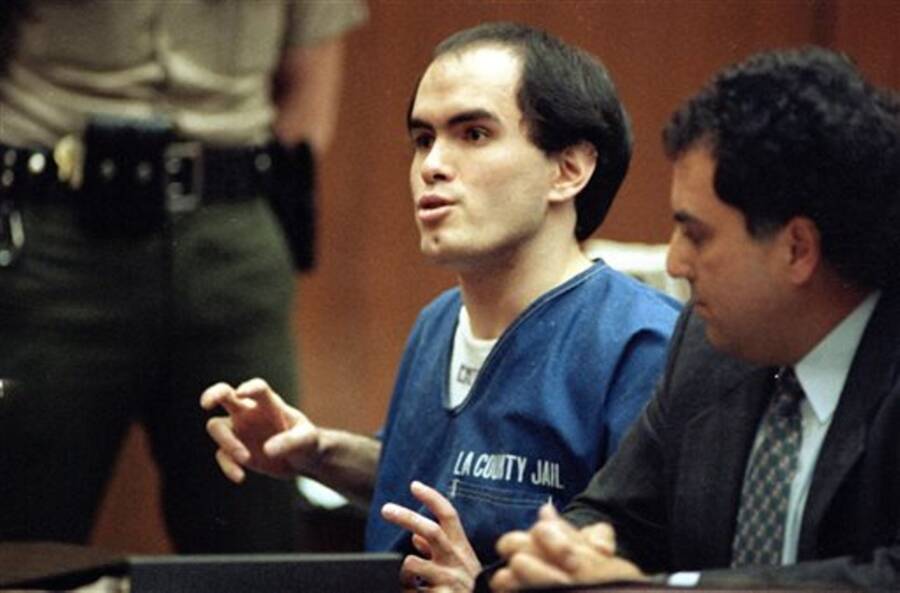
MurderpediaRobert John Bardo’s defense team hoped to show that he was too mentally unstable to have premeditated the murder of Schaeffer. The court didn’t buy it.
In a last-ditch effort to convince Judge Fulgoni that Robert John Bardo was mentally ill, Stephen Galindo said:
“Rebecca Schaeffer is a victim in the true sense of the word. But Robert Bardo is also a victim – a victim of parental neglect and a mental health system which failed to provide the treatment he needed.”
Judge Fulgoni, however, was not swayed. He obviously was more convinced by the argument made by prosecutor Marcia Clark, who claimed Bardo was, in fact, in control of his actions.
Clark argued that Bardo’s mental illness did not prevent him from committing a murder that required “carefully controlled, methodical planning.”
“A normal person does not stalk and murder an actress. But this was less than extreme psychosis,” Clark concluded.
Bardo was consequently convicted of murder in the first degree and sentenced to life in prison without the possibility of parole.
In 2007, while at Mule Creek State Prison in Amador County, Bardo was stabbed 11 times by another inmate on his way to breakfast. He received treatment at UC Davis Medical Center and made a full recovery.
Robert John Bardo, now aged 49, is imprisoned in Avenal State Prison in Avenal, California. He spends much of his time drawing portraits. His drawings range from those of film stars and musicians, like Angelina Jolie and Michael Jackson, to notorious killers such as David Berkowitz and John Wayne Gacy.
His portraits are available for sale online.
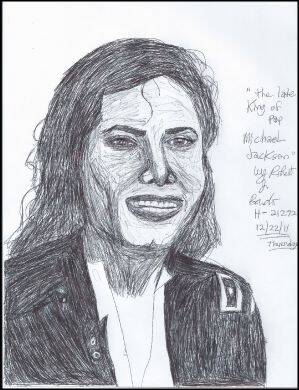
Robert John BardoA portrait of Michael Jackson by Robert John Bardo.
ABC News reached out to Robert John Bardo recently in prison. Regarding Rebecca Schaeffer, he said: “She was irreplaceable. I think about her every day because she should be here.”
After this look at Robert John Bardo, read up on the story of a Playboy bunny who was killed by her callous husband, Paul Snider. Then, peruse these chilling quotes by serial killers.


